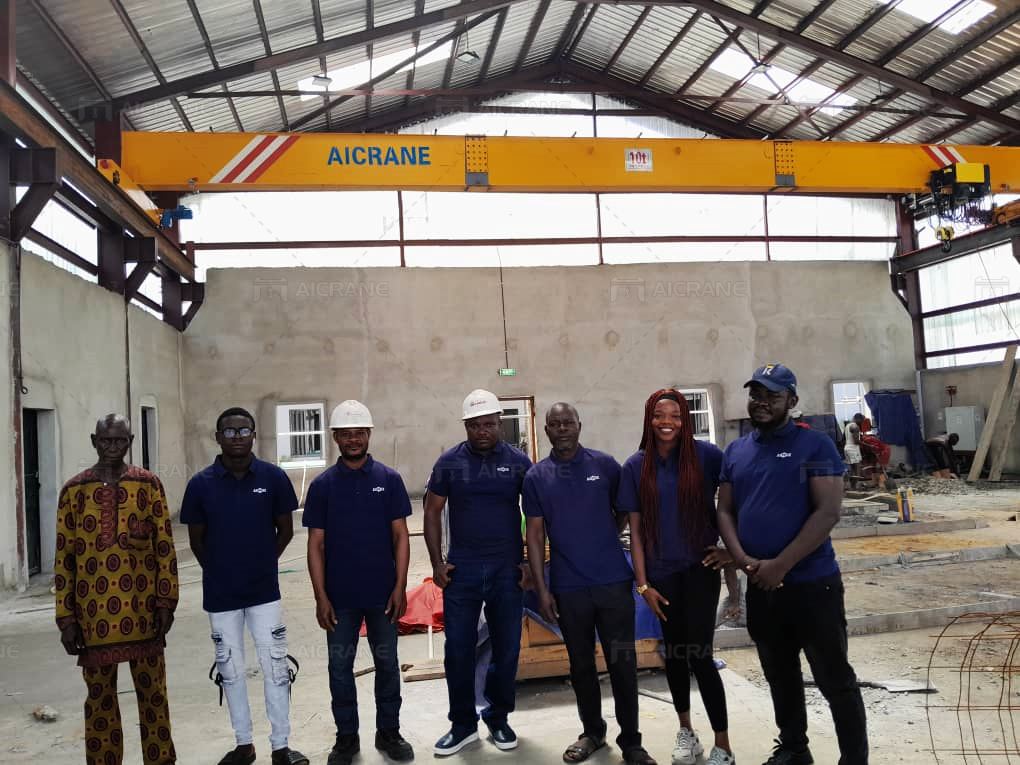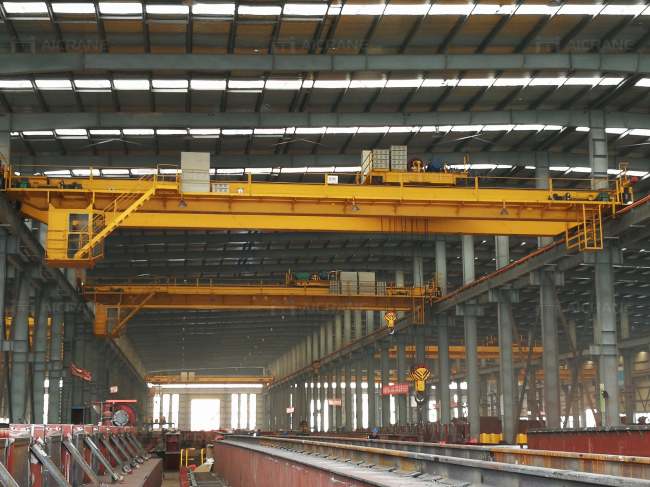When it comes to material handling in industrial environments, workshop cranes are essential for improving productivity, safety, and efficiency. These cranes are used to lift and move heavy loads within confined spaces, and choosing the right type is crucial for optimizing your workshop’s operations. Two of the most common types of workshop cranes for sale are single girder overhead cranes and double girder bridge cranes. Both offer distinct advantages, depending on the specific needs of your business. In this article, we’ll compare these two types of cranes, discussing their features, benefits, and applications, as well as how EOT (Electric Overhead Traveling) cranes fit into the equation.

Single Girder Overhead Cranes: Cost-Effective and Efficient
A single girder overhead crane is a popular choice for businesses looking for a cost-effective lifting solution. As the name suggests, this crane features a single horizontal girder or beam that supports the hoist, trolley, and lifting mechanism. The single girder design is simpler and more lightweight compared to its double girder counterpart, making it a more affordable option for many workshops.
Advantages of Single Girder Overhead Cranes:
- Lower Initial Cost: Since single girder overhead cranes have fewer components and require less material, they tend to have a lower upfront cost. This makes them ideal for small to medium-sized businesses or those operating with a tight budget.
- Space-Saving Design: The compact nature of single girder cranes allows them to operate in confined spaces, which is particularly beneficial for workshops with limited floor space.
- Simplicity: These cranes are easier to install and maintain due to their straightforward design. The reduced complexity means fewer parts may wear out over time, leading to lower maintenance costs.
Applications of Single Girder Overhead Cranes: Single girder cranes are best suited for light to medium-duty lifting applications, such as lifting smaller equipment, parts, and materials in workshops, factories, or warehouses. They are commonly used in industries like automotive, assembly, and packaging.
Double Girder Bridge Cranes: Heavy Duty and High Capacity
On the other hand, double girder bridge cranes are designed for more demanding, heavy-duty applications. These cranes feature two parallel girders, providing additional strength and stability. The two-girder system allows for higher lifting capacities, longer spans, and greater durability, making it ideal for businesses that need to lift heavier loads or cover larger areas.
Advantages of Double Girder Bridge Cranes:
- Increased Lifting Capacity: Double girder cranes are typically capable of handling heavier loads compared to single girder bridge cranes. The additional girder provides extra support, enabling these cranes to lift and move larger and heavier items safely.
- Longer Span: Because of their robust design, double girder bridge cranes can cover longer distances across a workshop or facility. This makes them suitable for large warehouses, factories, or facilities that require wider coverage for material handling.
- Better Stability: The dual-girder system offers enhanced stability, making it easier to lift heavy loads without compromising the crane’s performance or safety.
- Improved Hoist Travel: Double girder cranes typically feature a hoist that runs along the top of the girders, which allows the hoist to travel the full length of the bridge. This provides more flexibility and better lifting coverage across the entire workspace.
Applications of Double Girder Bridge Cranes: Double girder bridge cranes are typically used in heavy-duty applications such as steel manufacturing, construction, heavy machinery manufacturing, and other industries requiring high lifting capacity and wider spans. They are ideal for operations that involve lifting large components or materials with greater precision and reliability.

EOT Overhead Cranes: Versatile and Advanced Options
EOT overhead cranes are a category of cranes that includes both single and double girder configurations, but with an emphasis on electric operation. These cranes use electric motors to power the hoist, trolley, and bridge movement, making them more efficient, precise, and user-friendly compared to manual or hydraulic cranes.
Both single girder EOT cranes and double girder EOT cranes are highly versatile and can be customized to suit various industrial needs. The key benefit of EOT cranes lies in their automated features, such as the ability to lift and move loads remotely via electric controls. This enhances operational efficiency, reduces the risk of human error, and makes the crane easier to operate.
Advantages of EOT Overhead Cranes:
- Electric Operation: The electric-driven components of EOT cranes provide more precise and controlled movements compared to manual cranes, allowing for safer and more accurate lifting.
- Customizable Features: EOT cranes can be equipped with various features like remote control systems, anti-collision devices, load monitoring, and other advanced technologies to enhance productivity and safety.
- Lower Operating Costs: Electrical overhead cranes are typically more energy-efficient than their hydraulic or diesel counterparts. They can operate for longer periods without significant fuel consumption, leading to lower long-term operating costs.
Applications of EOT Overhead Cranes: EOT cranes are widely used in industries that require high precision and automated lifting solutions, such as manufacturing plants, construction sites, and heavy machinery workshops. These cranes are adaptable to both light and heavy-duty operations, making them a flexible choice for many businesses.
Choosing Between Single Girder and Double Girder Cranes
When selecting between single girder overhead cranes and double girder bridge cranes, it’s essential to consider several factors, including the lifting capacity, available space, and the specific demands of your operations.
- Lifting Capacity: If your workshop handles heavy materials or requires lifting larger items, a double girder bridge crane will likely be the better choice due to its higher lifting capacity and stability.
- Space Constraints: For smaller workshops or facilities with limited space, single girder overhead cranes may be the ideal option. Their compact design allows them to operate efficiently in confined spaces without compromising performance.
- Budget: If cost is a major consideration, single girder EOT cranes tend to be more affordable due to their simpler design and lower material costs. However, if your operations require higher lifting capacities and greater spans, investing in a double girder bridge crane might be worth the extra investment in the long run.
Conclusion
Both single girder overhead cranes and double girder bridge cranes offer distinct advantages, depending on the specific needs of your workshop. While single girder cranes are ideal for cost-effective, light-to-medium lifting applications, double girder cranes are better suited for heavy-duty tasks that require increased lifting capacity and larger spans. EOT overhead cranes, whether single or double girder, provide advanced features that enhance performance, safety, and efficiency. When choosing a crane for your business, carefully assess your lifting requirements, space limitations, and budget to find the best solution for your needs.
Whether you are looking for workshop cranes for sale to optimize your material handling operations or need specific customization for your industry, selecting the right crane can significantly impact your business’s productivity and safety.